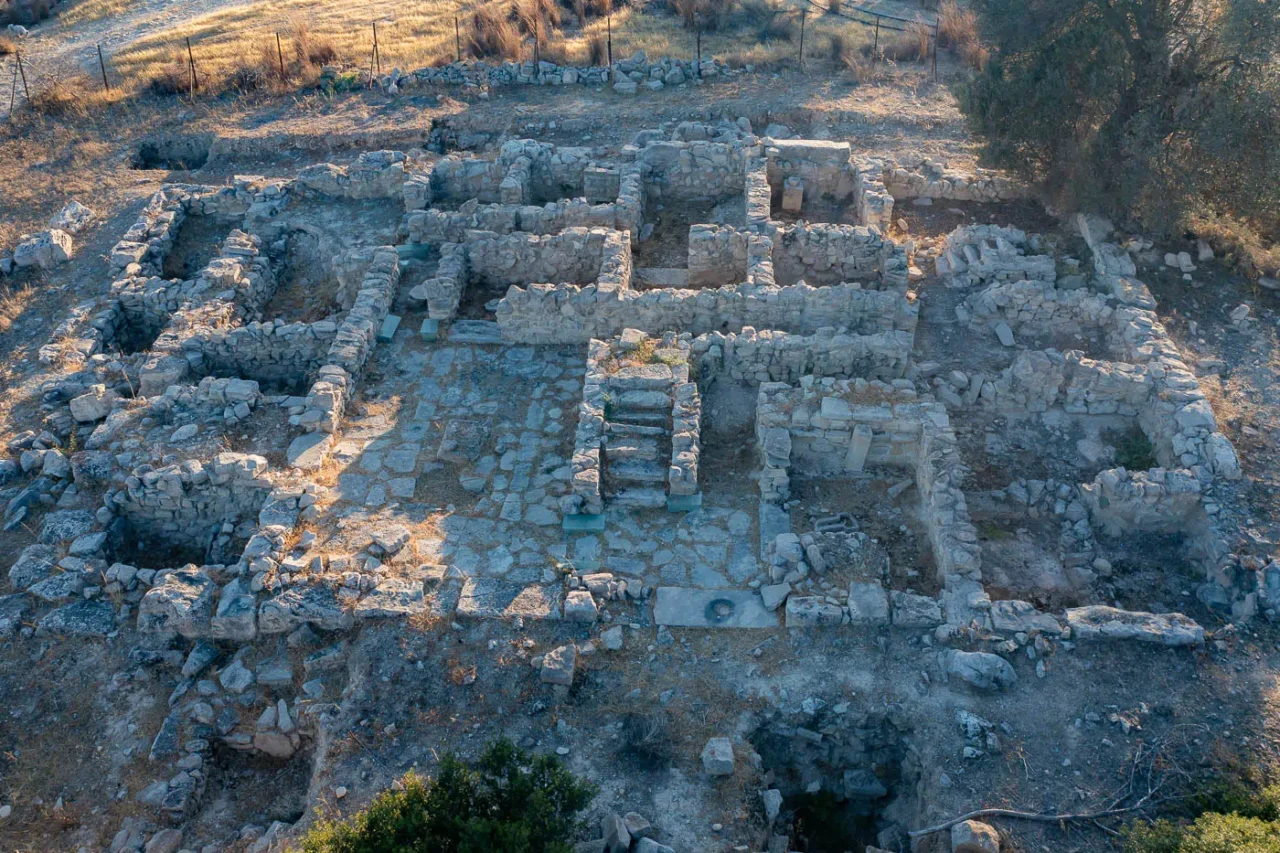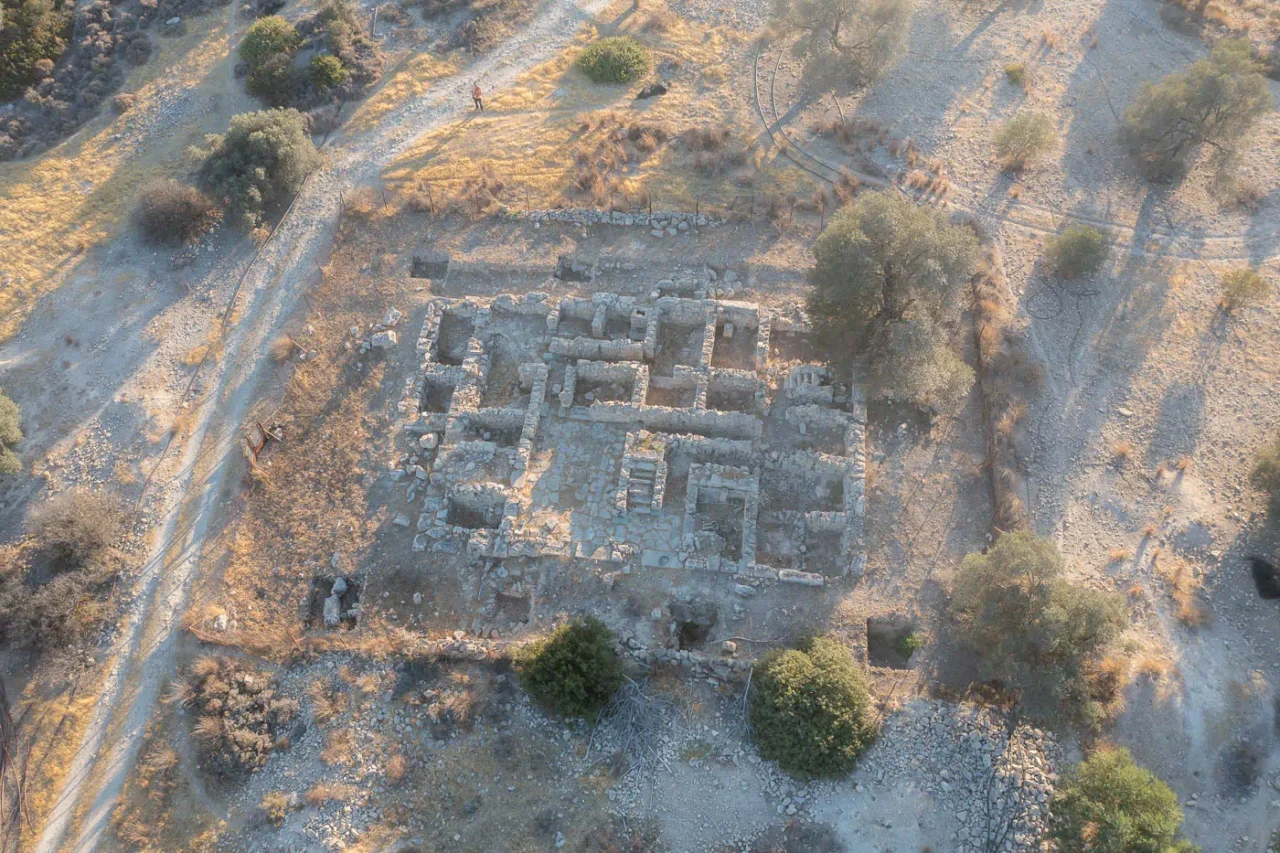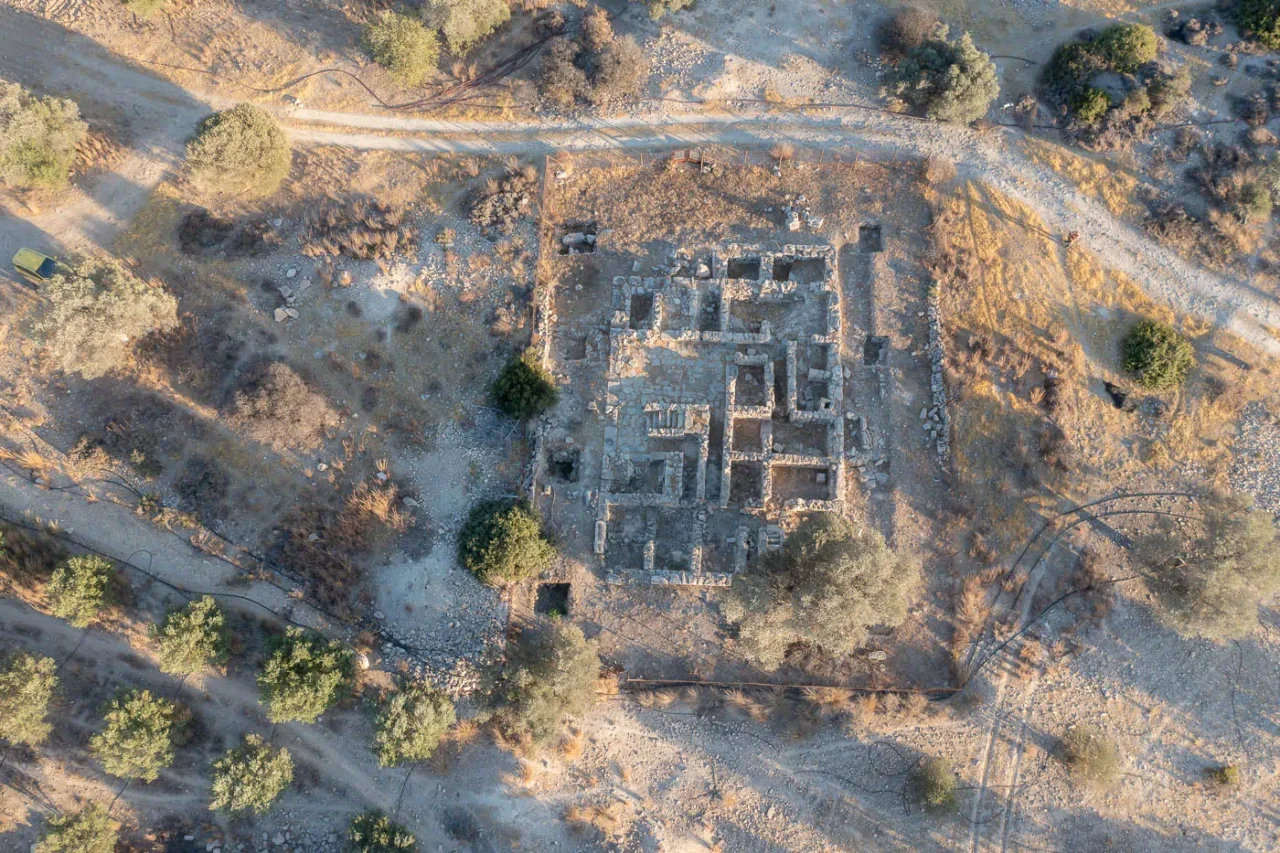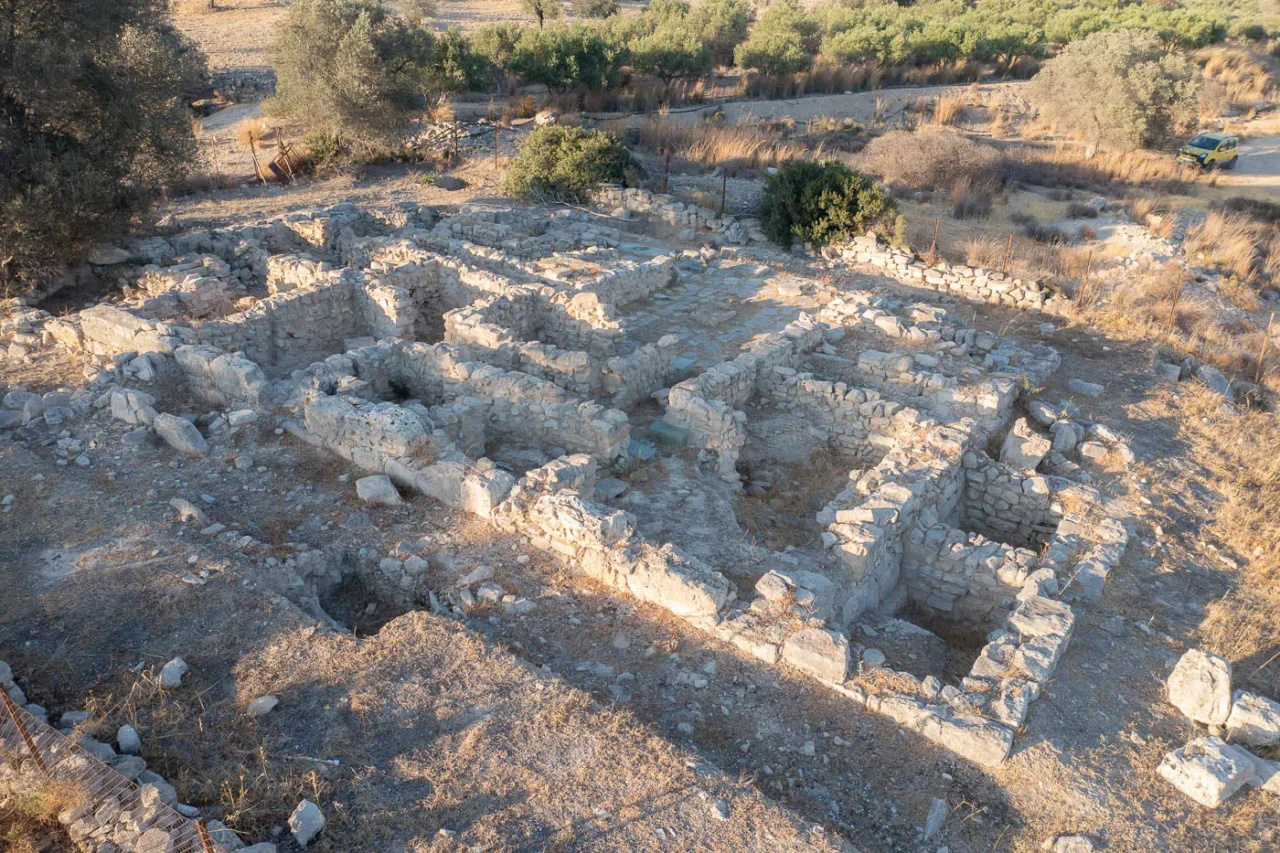



The remains of a Minoan villa lie a short distance north of the village of Pitsidia, near Kamilari, in south Crete. The villa was built during the Neopalatial period (1700-1450 BC), a time of relative peace and prosperity in Minoan Crete. The villa is significant because it provides insight into the daily lives of the Minoans, their architectural practices, and their response to natural disasters like earthquakes.
Architectural Features
The villa is a large, rectangular building measuring 20.75 by 13 meters. The external walls are constructed with large, roughly hewn rectangular stones, a common feature in Minoan architecture. The internal walls are built with smaller, more refined stones and held together with clay mortar. The villa had multiple rooms, each serving different functions, including storage, ritual activities, and pottery production. One of the most notable features of the villa is the presence of a “hiding place” in Room XIX, a small, enclosed space within the wall where intact or slightly broken conical cups were found. This discovery suggests the room may have been used for pottery production or storage.
Earthquake Damage and Response
The villa’s destruction is attributed to a powerful earthquake during the Late Minoan IB period (1450-1400 BC). Evidence of this event includes collapsed walls, fallen stones, and the eastward orientation of the debris, a pattern observed in other parts of the building. The presence of vertical holes in the walls of Room XIV, likely for the placement of wooden beams, suggests that the Minoans had implemented anti-seismic reinforcement techniques to protect the structure from earthquakes. However, despite these precautions, the earthquake caused significant damage, leading to the abandonment of the villa. The discovery of a skeleton buried under the rubble in an adjacent building further underscores the destructive force of the earthquake.
Jusseret (2017) suggests that the archaeological evidence from Pitsidia supports the earthquake theory. The author mentions that the excavator, Vallianou (1996), found several lines of evidence that point towards an earthquake being the cause of the destruction of the villa:
- Layers of rubble
- Oriented fallen objects and stones
- Localized fire damage
- Broken and scattered vases
- Few broken in situ vessels
- An absence of valuable items
- Abandonment of the structure
- Tilted walls
Jusseret (2017) does point out that some of this evidence could be interpreted differently. For example, the lack of valuable items could mean that the inhabitants had time to collect their belongings before fleeing, or that rescue operations were undertaken after the earthquake. The author also notes that the absence of widespread fire damage does not necessarily rule out an earthquake, as fires do not always accompany them.
However, the overall weight of the archaeological evidence, particularly the consistent pattern of destruction and the tilted walls, strongly suggests that an earthquake was the primary cause of the villa’s destruction.
Ritual Room
Room VIII stands out as the most significant room in the villa due to its unique features and lack of clear functional purpose. The room has a low bench running along the west wall, a narrow “shelf” above the bench, and a rectangular stone pillar in the middle of the west wall. The pillar has a rectangular cavity at the top and is similar to another pillar found fallen south of the room. The excavators interpreted this room as having a religious function, although the specific nature of the rituals performed there remains unclear. The presence of a wine press-like stone in the room suggests a possible connection to rituals involving wine, a common element in Minoan religious practices.
Archaeological Site: Key Points
- Construction Period: Neopalatial period (1700-1450 BC)
- Location: Pitsidia, near Kamilari, south Crete
- Dimensions: 20.75 meters by 13 meters
- Historical Significance: Provides insights into Minoan daily life, architecture, and response to earthquakes.
- Current Status: Excavated and partially restored.
References
- Minoan Crete
- Simon Jusseret, Archaeoseismological research on Minoan Crete: past and present in Minoan Earthquakes Breaking the Myth through Interdisciplinarity Minoan Earthquakes, Leuven University Press, 2017


There are no comments yet.